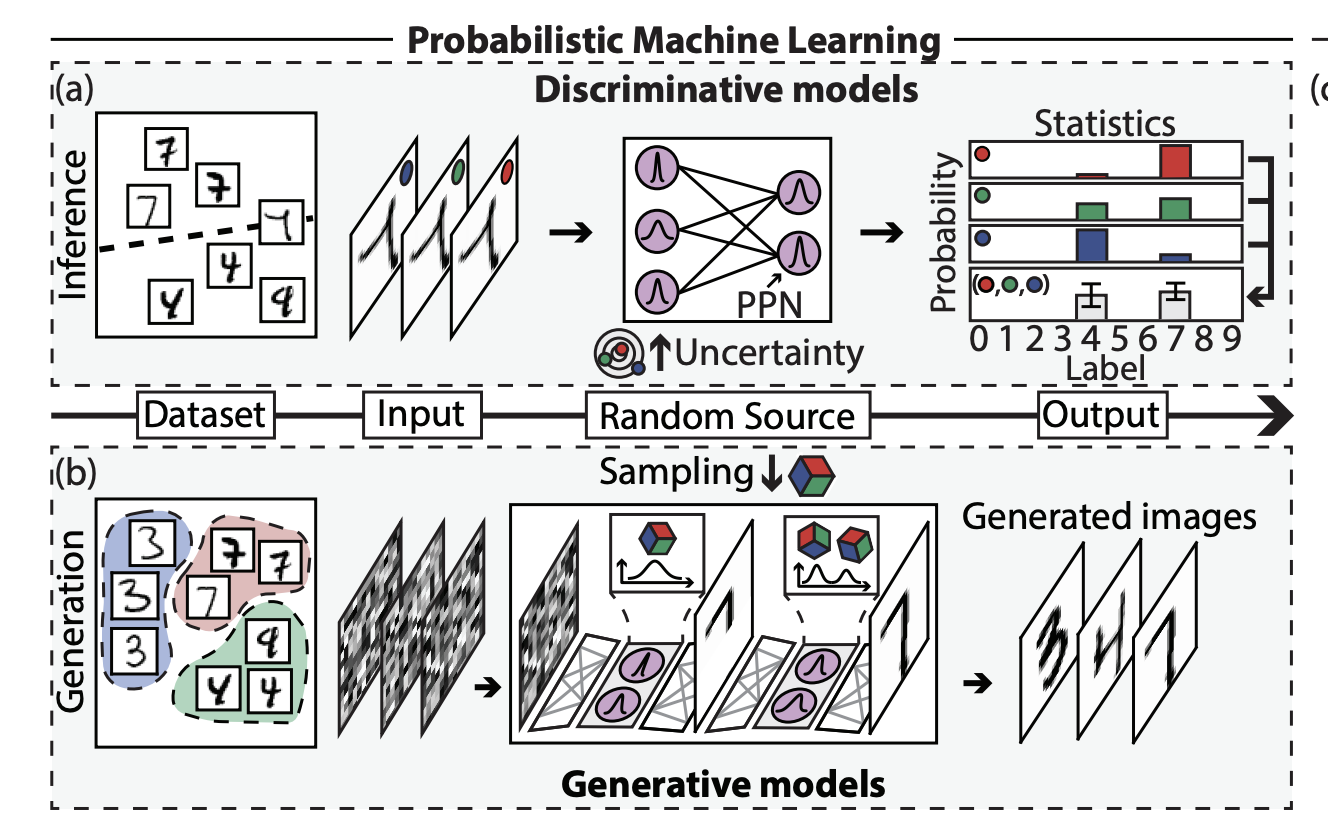Researchers from MIT, Stanford University, and Harvard University have developed a photonic probabilistic computer, a new approach to machine learning that uses quantum vacuum noise to encode uncertainty and enable statistical modeling. The team demonstrated the system’s capabilities by programming a measurement-and-feedback loop for time-multiplexed photonic probabilistic neurons (PPNs) to solve probabilistic machine learning tasks. The researchers also proposed a path towards an all-optical probabilistic computing platform with a sampling rate of 1Gbps and energy consumption of 5 fJ/MAC. This development could lead to scalable, ultra-fast, and energy-efficient probabilistic machine learning hardware.
What is Photonic Probabilistic Machine Learning?
Photonic probabilistic machine learning is a new approach to machine learning that uses quantum vacuum noise, a form of pure randomness derived from fluctuating electromagnetic fields, to encode uncertainty and enable statistical modeling. This method has shown promise for creating high-speed and energy-efficient stochastic photonic elements. However, the development of photonic computing hardware that can control these stochastic elements to program probabilistic machine learning algorithms has been limited.
The researchers at the Research Laboratory of Electronics at MIT, Department of Physics at MIT, E L Ginzton Laboratories at Stanford University, The NSF AI Institute for Artificial Intelligence and Fundamental Interactions, Center for Theoretical Physics at Massachusetts Institute of Technology, and Department of Physics at Harvard University have implemented a photonic probabilistic computer. This computer consists of a controllable stochastic photonic element, a photonic probabilistic neuron (PPN), implemented in a bistable optical parametric oscillator (OPO) with vacuum-level injected bias fields.
How Does Photonic Probabilistic Machine Learning Work?
The researchers programmed a measurement-and-feedback loop for time-multiplexed PPNs with electronic processors (FPGA or GPU) to solve certain probabilistic machine learning tasks. They showcased probabilistic inference and image generation of MNIST handwritten digits, which are representative examples of discriminative and generative models. In both implementations, quantum vacuum noise is used as a random seed to encode classification uncertainty or probabilistic generation of samples.
The researchers also proposed a path towards an all-optical probabilistic computing platform with an estimated sampling rate of 1Gbps and energy consumption of 5 fJ/MAC. This work paves the way for scalable, ultra-fast, and energy-efficient probabilistic machine learning hardware.
What are the Applications of Photonic Probabilistic Machine Learning?
Probabilistic machine learning can accelerate image generation, heuristic optimization, and probabilistic inference by leveraging stochasticity to encode uncertainty and enable statistical modeling. These approaches are well suited for real-life applications which must account for uncertainty and variability, including autonomous driving, medical diagnosis, and drug discovery.
However, digital complementary metal-oxide-semiconductor (CMOS) technology requires extensive resource overhead to simulate randomness and control probabilities, which leads to significantly increased power consumption and decreased operational speed. These challenges have sparked recent proposals for beyond-CMOS hardware such as low-barrier magnetic tunnel junctions and diffusive memristors, both of which leverage intrinsic noise as a source of randomness.
How Does Photonic Probabilistic Machine Learning Compare to Other Technologies?
Optical neural networks (ONNs) have shown remarkable progress in energy efficiency, speed, and bandwidth for solving deterministic tasks such as image classification and speech recognition. Another important feature of ONNs is the inherent presence of noise in their operation. Therefore, photonic computing hardware typically implements computational tasks that are robust to optical noise. ONNs have also been explored in regimes where deterministic tasks are performed with high accuracy despite the presence of high levels of inherent noise.
Conversely, ONNs in which optoelectronic noise is intentionally added have also been proposed for optimization and generative networks. Meanwhile, optics has demonstrated high-data rate random number generation by harnessing quantum vacuum noise and has shown natural abilities to generate probability distributions from quantum noise. However, the experimental demonstration of a photonic probabilistic machine learning system has remained elusive so far, mostly due to the lack of programmable stochastic photonic elements.
What is the Future of Photonic Probabilistic Machine Learning?
The researchers have experimentally demonstrated a probabilistic computing platform utilizing photonic probabilistic neurons (PPNs). Their PPN is implemented as a biased degenerate optical parametric oscillator (OPO), which leverages quantum vacuum noise to generate a probability distribution encoded by a bias field. They realized a hybrid opto-electronic probabilistic machine learning system which combines time-multiplexed PPNs and electronic processors with algorithm-specific measurement-and-feedback strategies.
The researchers demonstrated probabilistic inference of MNIST handwritten digits with a stochastic binary neural network (SBNN), highlighting how quantum vacuum noise can encode classification uncertainty in discriminative models. Additionally, they showcased the generation of MNIST handwritten digits with a pixel convolutional neural network (pixelCNN), demonstrating how statistical sampling in generative models can be facilitated by quantum vacuum noise.
Furthermore, they provide a thorough discussion of the potential of an all-optical probabilistic machine learning system, offering a possible performance enhancement by a factor of 100 in both speed and energy over traditional CMOS implementations, thereby opening new avenues in high-speed, energy-efficient computing applications.
Publication details: “Photonic probabilistic machine learning using quantum vacuum noise”
Publication Date: 2024-03-07
Authors: Seou Choi, Yannick Salamin, Charles Roques‐Carmes, Rumen Dangovski, et al.
Source: arXiv (Cornell University)
DOI: https://doi.org/10.48550/arxiv.2403.04731

